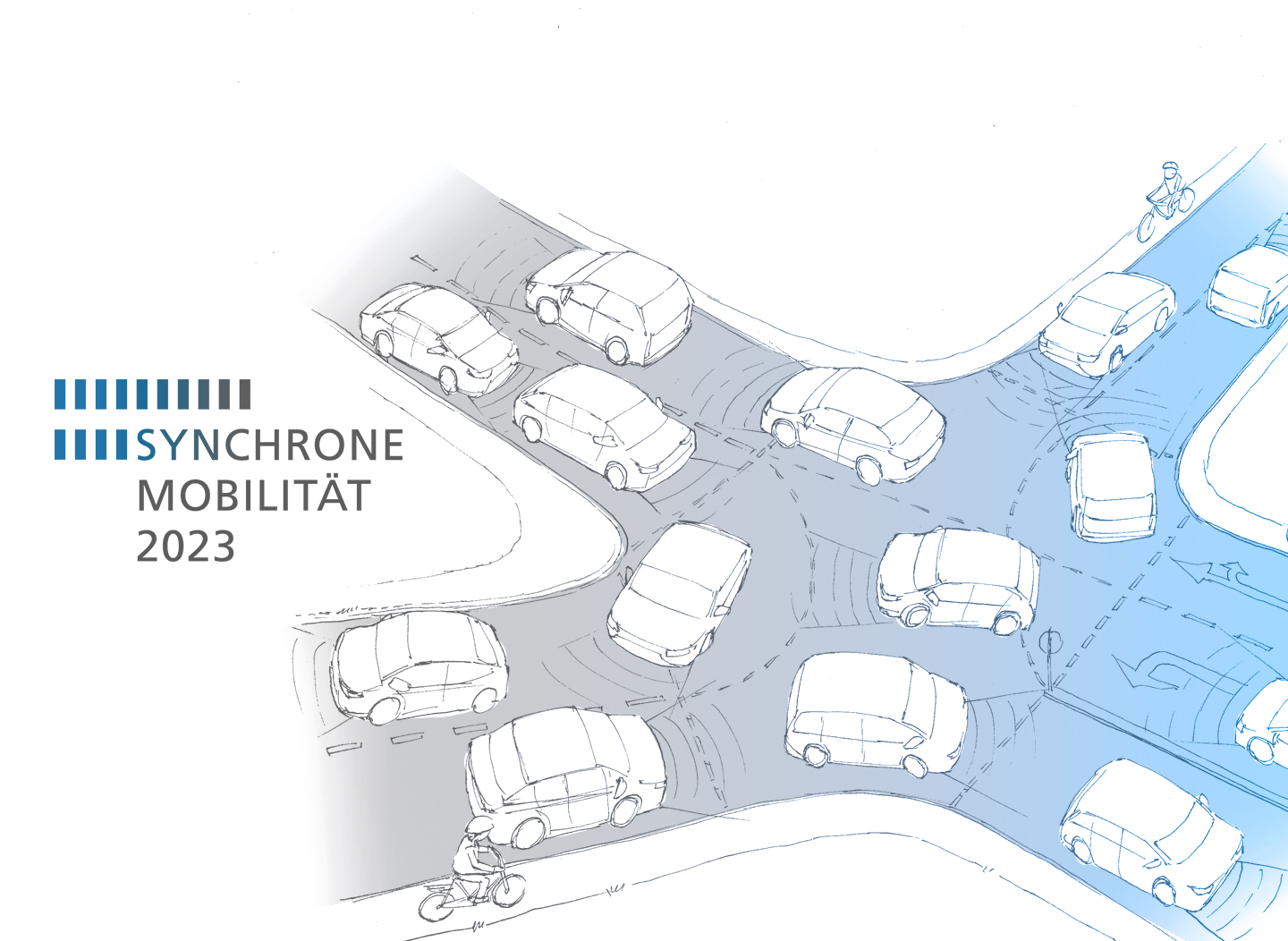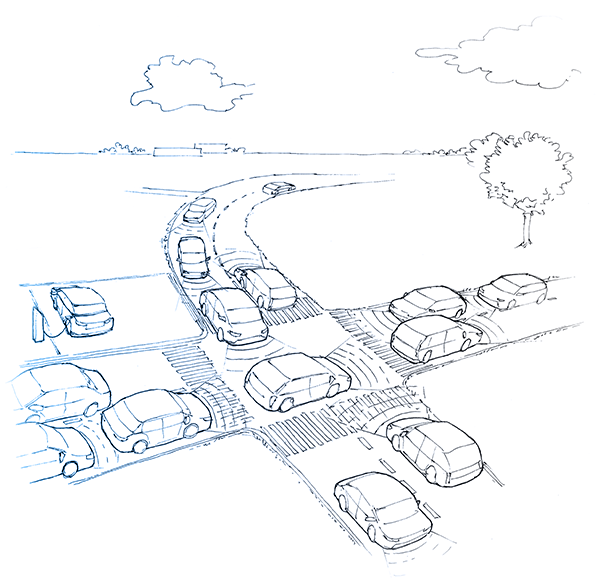Synchronized Mobility
In the animal kingdom, the swarm behavior of birds, fish or gregarious animals shows how a multitude of individuals can move effectively and fluently in a very confined space.
The intelligent transport systems of the future will take this kind of behavior as a reference point and use various forms of synchronization to
- increase the capacity of the existing transport infrastructure,
- accelerate traffic flows for reducing pollutant emissions,
- optimize multimodal transport chains and thereby
- consume only a minimum amount of traction energy, preferably from renewable sources.
At present, a perfectly synchronized transportation network, in which automatically controlled vehicles meet at crossroads without traffic lights and move through traffic collision-free at full speed, seems like a distant vision. However, many of the necessary vehicle technologies and infrastructural requirements are already available or under development. Synchronized mobility requires a high degree of automation across all levels of individual vehicles to infrastructure as well as traffic centers.
These requirements towards automation in various fields of transportation define the topic areas within a planned Saxon high-tech research project, including:
- automated driving and driver assistance functions in the fields of automotive, commercial vehicle technology and public transport systems,
- propulsion, steering and operating concepts for highly automated vehicles and transport systems,
- on-board and wayside environment sensors,
- high-precision and reliable communication and positioning technologies,
- safety technologies for connected mobility,
- compact geo-referenced data and maps,
- cooperative multimodal navigation strategies,
- synchronization mechanism for area-based traffic management by means of dynamic traffic management systems,
- Big Data applications for traffic simulation, traffic state detection and traffic data analysis
- multimodal payment systems, business models as well as accompanying research including legal, urban and user-specific aspects.
Sustainable mobility offers enormous innovation potential across various sectors. The German automotive industry, which, according to representative studies, generates more than 40 percent of all innovations in the vehicle sector worldwide each year, has already answered to this technology shift.
In addition to research topics such as alternative propulsion technologies, lightweight structures, electromobilty and energy-efficient production technologies, new topics are now at the heart of industrial research and development. These include automated driving functions and mobility services based on connected vehicles and cooperative transport systems as well as smart mobility and car-sharing models. Furthermore, mobility networks and intelligent traffic planning in the context of urban communication infrastructure are becoming increasingly important.
In 2016, 50 percent of all new cars will be equipped with network-based services. Within the next 15 years, these systems will be available in all vehicles driven in highly developed industrial nations.

